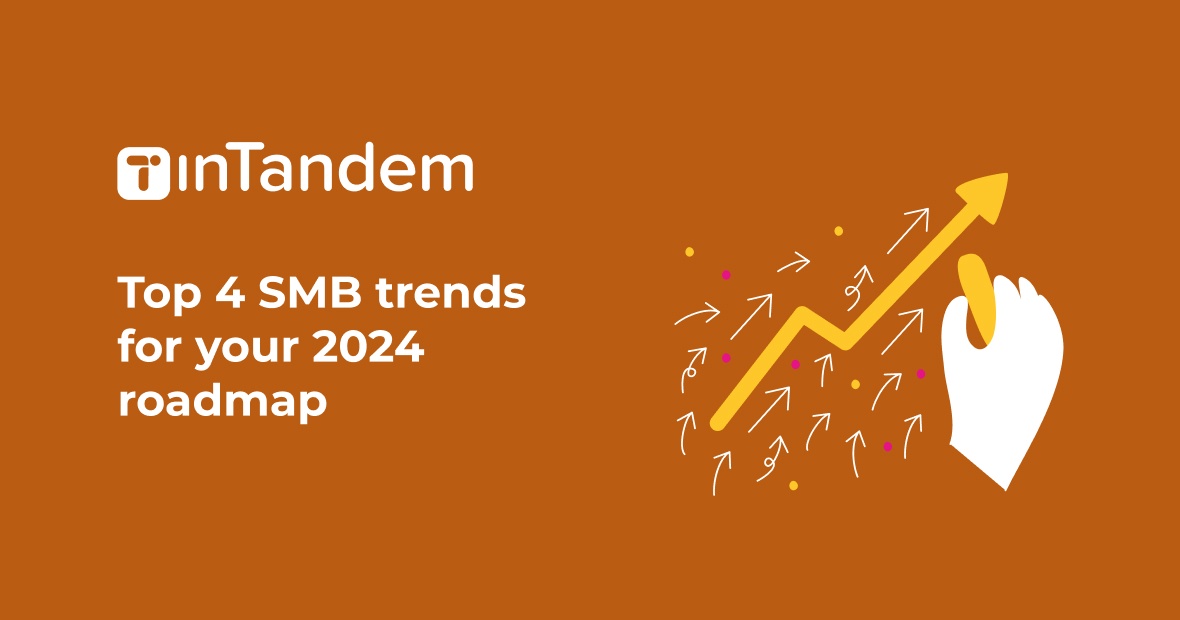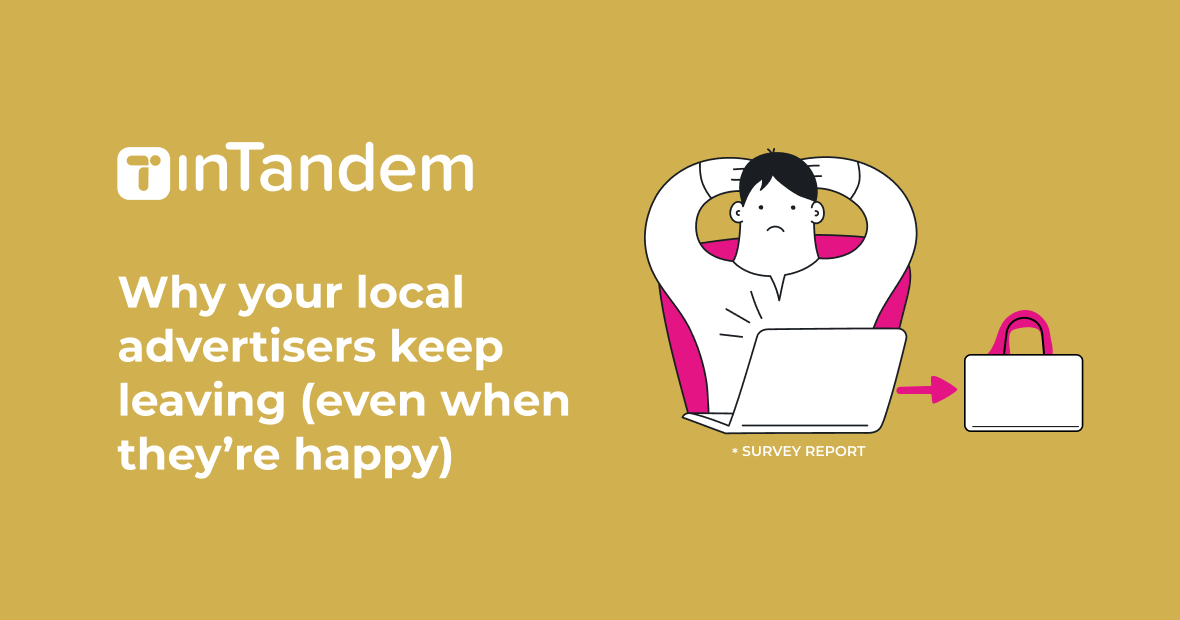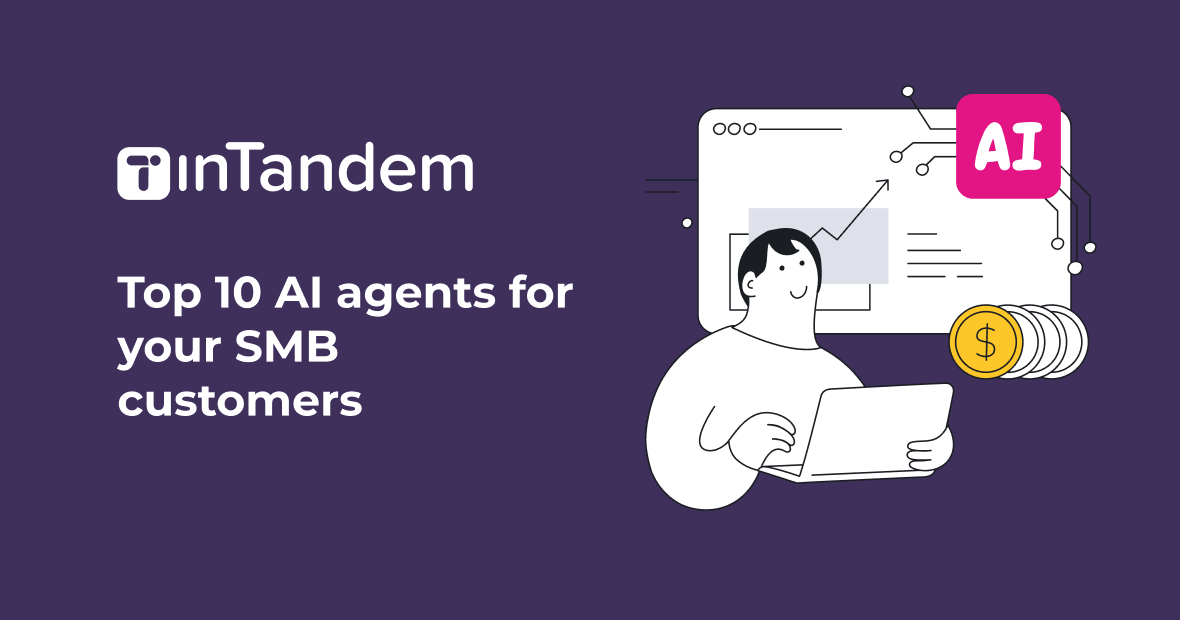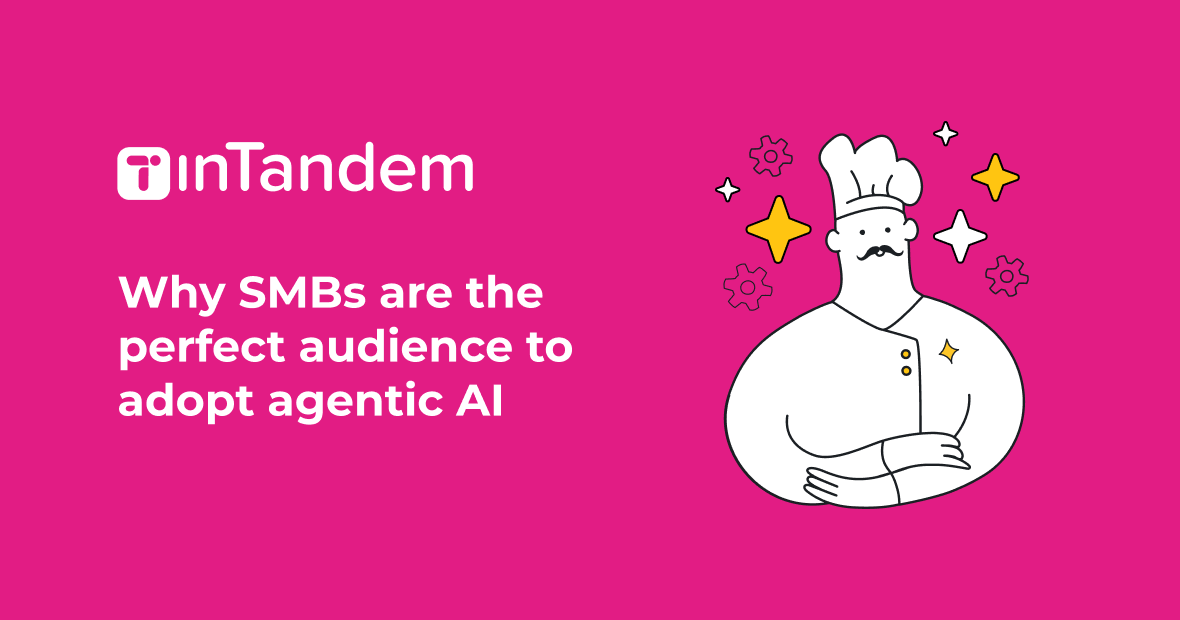2024 is shaping up to be an interesting year for small businesses, full of growth and potential. This creates a great opportunity for the organizations that serve this segment to step up and offer solutions that capitalize on current trends and propel SMB success.
As part of the research for our 2024 roadmap, we took a deep dive into small business challenges, conducted interviews with SMB owners, and gathered feedback from our partners.
Based on our research, and after analyzing data from tens of thousands of SMBs using our platform, we’ve defined four strategic focuses that define our roadmap for the next year.
The following trends are highly impacting SMBs’ success. Including these trends in your SMB SaaS roadmap will help you remain competitive and ensure the longevity of your small business engagements.
AI: an emerging technology with a high impact on SMBs
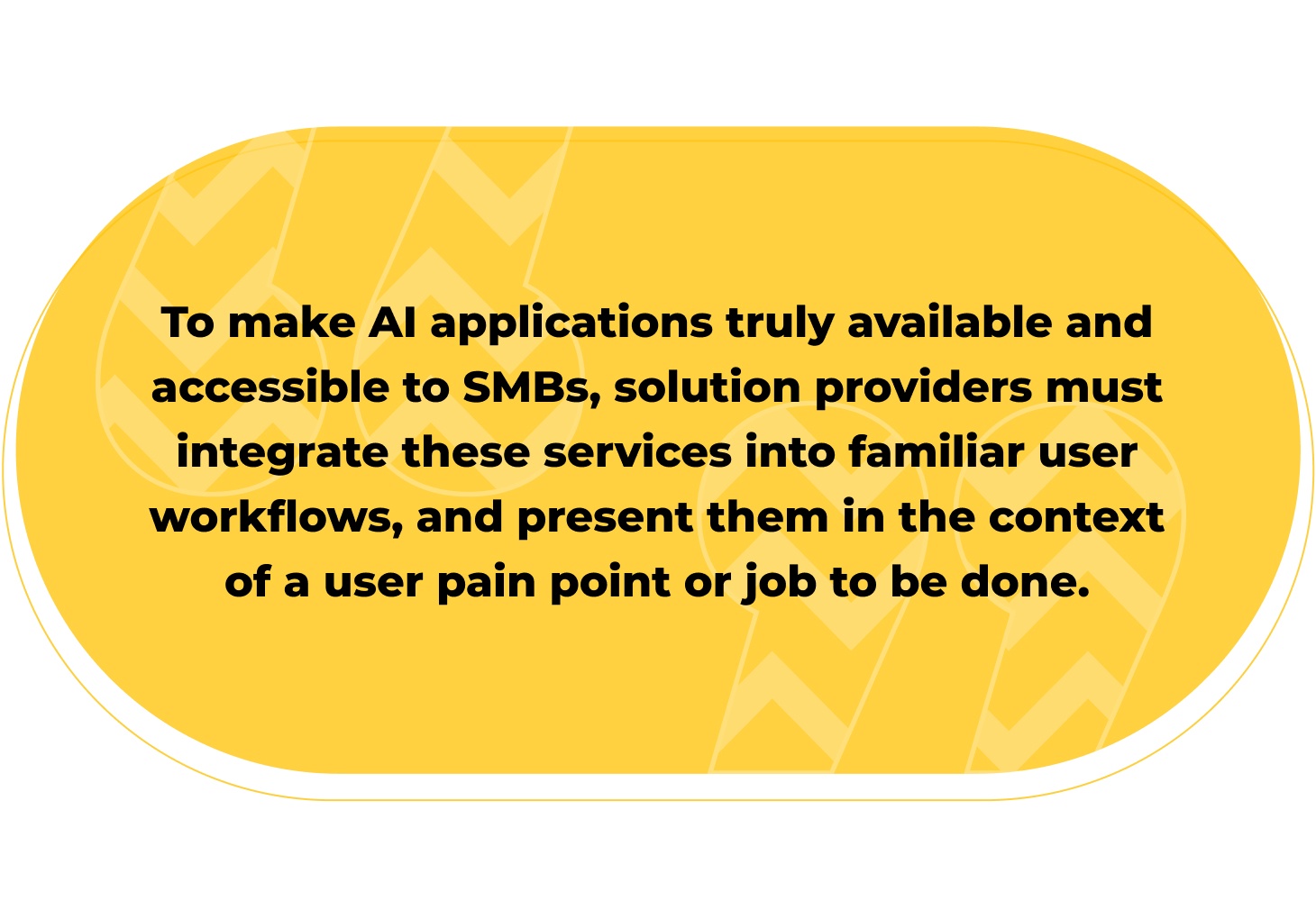
2023 will be remembered as a turning point in the awareness and public opinion on applications of AI technology. What started with the introduction of OpenAI’s Chat GPT, and evolved into generative AI conversation bots and visual generators, expanded into a much wider trend. The introduction of accessible, user-friendly, and free AI applications has changed the way users expect to interact with products. More and more market segments are expecting products that offer natural-language UX, simplification of complex tasks, a high degree of automation, and immediate access to valuable knowledge.
The small business sector will not be left behind and is already exploring practical ways to implement AI technology into their daily operations. However, due to limited resources and the lack of prior experience, many small businesses will face the challenge of integrating these advanced technologies into their day-to-day.
To make AI applications truly available and accessible to SMBs, solution providers must integrate these services into familiar user workflows, and present them in the context of a user pain point or job to be done. Rather than offering AI applications as standalone experiences, we strive to seamlessly inject AI into the native user experience, creating one unified SMB SaaS experience.
I am particularly excited about the future of AI adoption in the SMB market. There are many use cases that seem to be attracting SMBs to AI, and I’m sure this is only just the beginning. For now, we’ve found that only 31% of SMBs are using AI for their daily business needs, and the potential for further adoption is substantial.
Adoption: Overcoming common challenges
A common blocker of technology adoption in the SMB SaaS market is the learning curve associated with mastering a new solution, and their need to provide training to their employees. With limited technological experience and little time to invest, many small businesses find it difficult to independently explore new solutions, and struggle to learn and use them to their fullest extent.
Furthermore, with a constantly evolving tech landscape and the abundance of available tools, many SMBs use multiple and disjointed apps. The use of multiple apps with little to no integrations can result in fragmented user experience and data discrepancies.
Through our inTandem platform, we aim to provide SMBs with a seamless and fully integrated experience, offering all the business tools they need under the same roof, with the option of connecting any external apps as needed.
Cash flow: Navigating SMBs through economic uncertainty
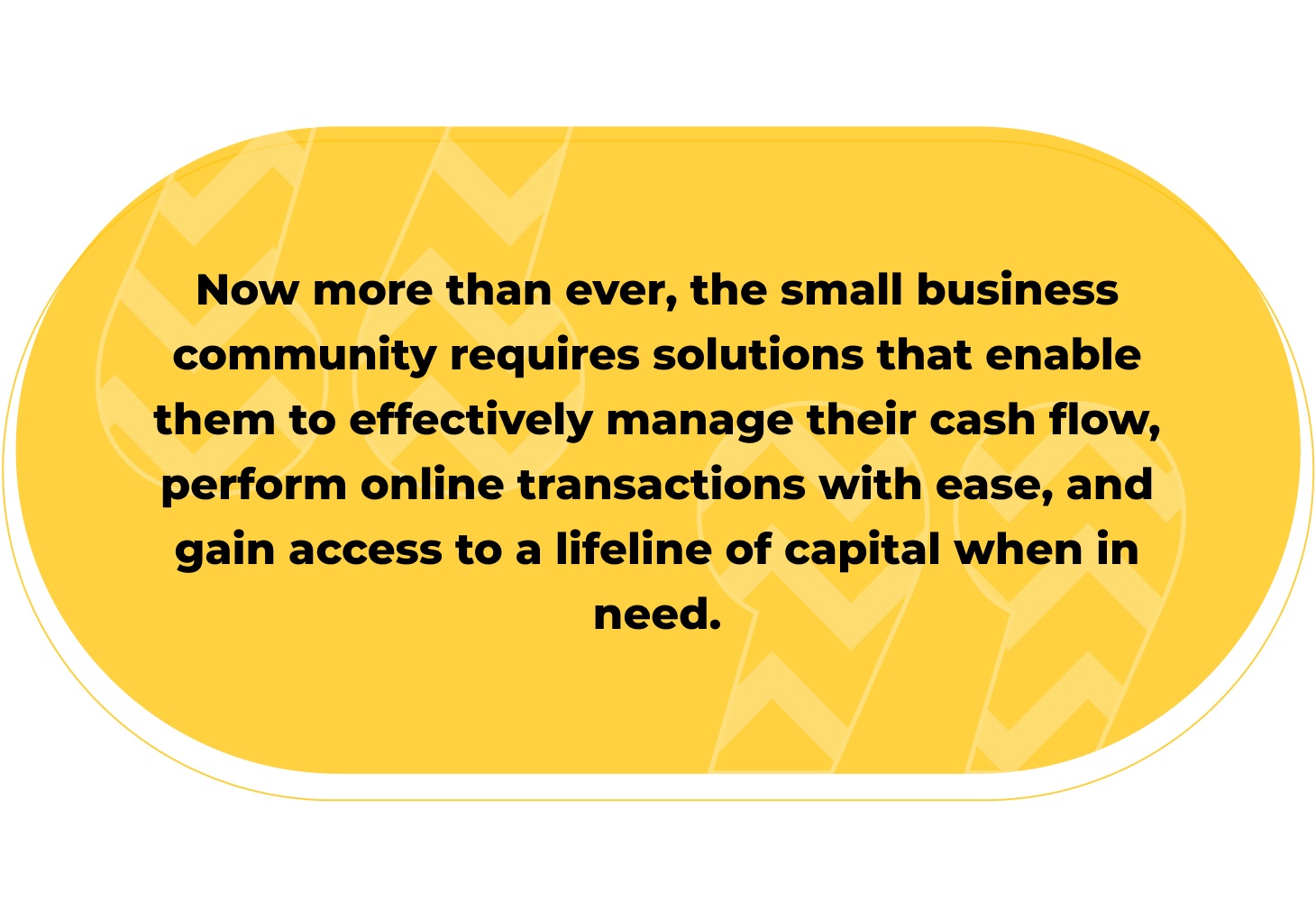
The shifts in our global economic conditions remain unpredictable and small businesses, which are particularly vulnerable to such fluctuations, must adapt their financial strategies accordingly. Now more than ever, the small business community requires solutions that enable them to effectively manage their cash flow, perform online transactions with ease, and gain access to a lifeline of capital when in need.
These solutions are critical for small businesses to regain control of money-in and money-out, develop financial resilience, and build sustainable business models that ensure their stability and future financial health. Having one reliable source for all financial information (rather than having their data scattered across multiple platforms) is becoming critical for SMBs. This is a particularly interesting area for financial services and fintech providers, who are in the position to provide such tools integrated with open banking capabilities.
Online customer experience: Meeting the new standard
As consumers become accustomed to receiving fast and highly personalized service online, small business owners are expected to meet the standard defined by larger corporations with deep pockets.
Although their resources are limited, and they often lack the know-how, small businesses have no choice but to adapt to the new standard of online service and offer consistent, personalized, frictionless digital customer experiences while maintaining their relationships with clients.
To meet these demands, more SMBs are seeking solutions that help streamline customer experiences and offer their clients the ability to do things like pay online, view and sign documents from their mobile phones, chat in real-time and more.
Spruce up your SMB SaaS roadmap
SaaS is evolving to meet the ever-changing needs of small businesses, and so should your roadmap. Focusing on AI, adoption, cash flow, and online customer experience is a surefire way to keep your SMBs around.
Partner with an SMB SaaS solution provider that is knowledgeable and experienced in serving the SMB market.
Our team continues to closely monitor SMB trends and leverages these insights to further enhance our platform. If you’d like to discuss trends in SMB SaaS or possible collaborations in this area, let’s be in touch!






















